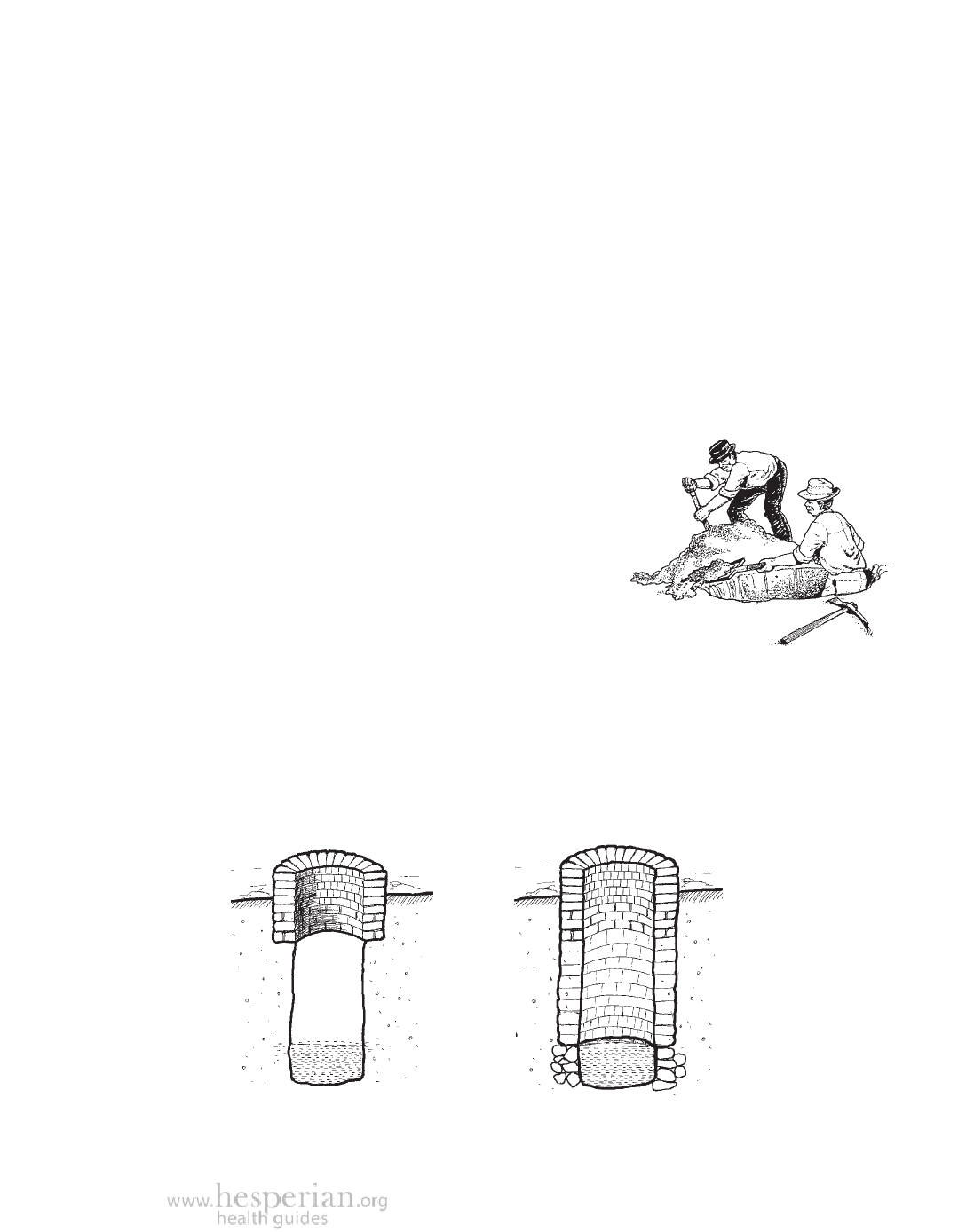
Protected Wells
79
Protect the family well
Many communities have tube wells or boreholes with pumps built by
governments, or local or international agencies. These deep, closed wells
protect water from contamination by people and animals. But years after they
are drilled, many of these wells can no longer be used because the pumps have
broken, or spare parts are no longer available, or the people who knew how to
fix them are gone. This results in no regular supply of clean water. People must
walk long distances or collect contaminated surface water to fill their needs.
In some parts of Africa, protected family wells are replacing tube wells.
A protected well is a hole dug by hand with a lining, a concrete cover, a
windlass to raise water, and a drainage platform. Each of these things adds
protection to the well. With all of them in place, and with careful handling of
the water, a family well can be very safe.
Where to dig a well
When digging a well, the best sign there will be
water is when you see other wells nearby. But if the
other wells are deep boreholes, the groundwater may
be too deep to get to by hand digging. Another good
sign is the year-round presence of plants that need a
lot of water to survive. Low areas are more likely to
have water than higher ground. But if a well is dug in a low
area, it will need to be protected from rainwater runoff.
The well lining
In very firm soils, lining the well may seem unnecessary. But it is wise to
line at least the top 1 to 2 meters below ground to prevent the side walls
from collapsing. If the entire well is lined it will make the water source more
dependable, but it will be more difficult to dig the well deeper at a later time.
A well can be lined with stones or rocks, with fired bricks, or with concrete.
Top 1 to 2 meters lined
Fully lined well
A Community Guide to Environmental Health 2012